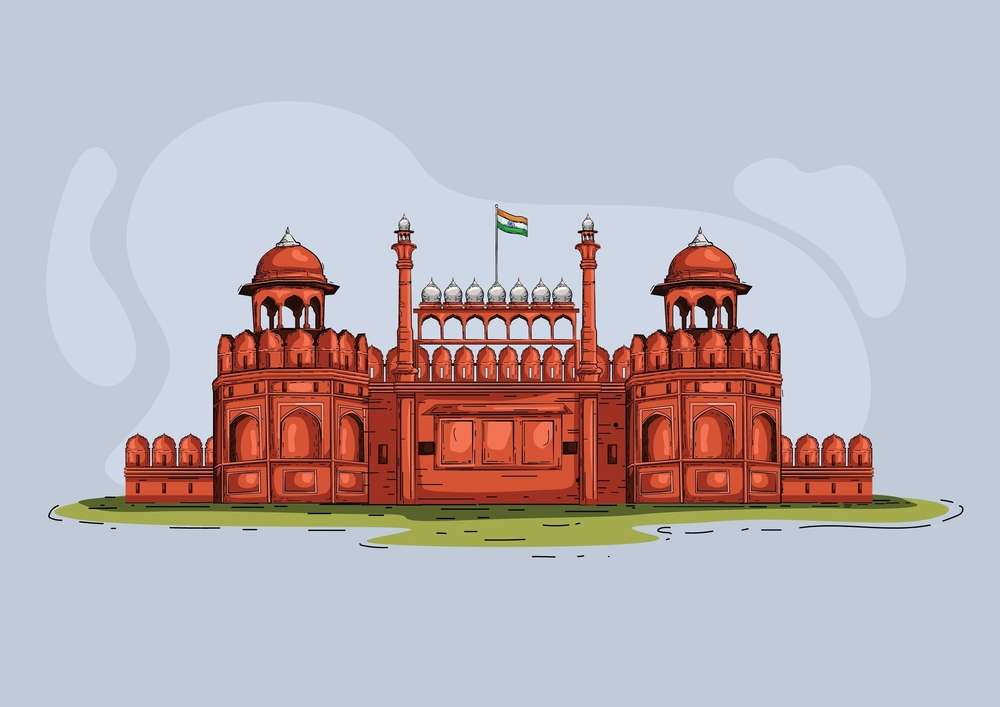Bahrain, a small island nation in the Arabian Gulf, is a country with a rich history and culture. From ancient civilizations to Islamic history and beyond, Bahrain’s historical sites contain tales of thousands of years. Every site on the tour is a symbol of the island’s varied and colorful history and reflects its position as a hub of trade, religion, and culture in the Gulf. With the rich legacy that Bahrain has from over thousands of years of settlements and empires, a visit to the top 10 historical sites in Bahrain will amaze and expand your concept of the island’s heritage.
The fort of Bahrain (Qal’at al-Bahrain)
UNESCO World Heritage Listed, the Bahrain Fort is one of the most famous historical sites in the entire kingdom. The fort, located on the island’s northern coast, has existed for more than 4,000 years. The ancient Dilmun civilization constructed the original fort, with later contributions by other significant regional powers such as the Persians and the Portuguese. Given its proximity to the water, the fort was a key stronghold for several empires. Today, tourists can wander around the ancient remains, including walls, towers, and gates that are remarkably intact, and educate themselves on the fort’s absorbing past with informative panels. A natural vantage point atop Gadaiff is the best place to enjoy dramatic vistas of the sea and the surrounding countryside. It is a sensitive window on the past for anyone interested in Bahrain’s history.
Barbar Temple
Located in the village of Barbar, Barbar Temple is one of the largest and most important archaeological sites on the island. Built by the Dilmun people, this old place of worship was dedicated to the gods of that time. It comprises three principal temples containing distinct features such as extensive stone columns and terraces. The site gives a unique perspective into Bahrain’s pre-Islamic religion and is designed to give visitors an insight into the superior architectural techniques of the Dilmun nation. In addition to the ruins, the tranquility is inspiring, and there is a sense of awe as you walk through the ruins of a city that lived and died thousands of years ago.
Al Khamis Mosque
Dating from the 8th century, Al Khamis Mosque is one of the oldest mosques in the country, retaining its ancient form and being an excellent example of early Islamic architecture in Bahrain. The mosque itself has been renovated multiple times over the years, but the main part of the building is centuries old, with no effort wasted by Khamisians to keep their great history alive to see. The mosque’s clean and attractive design is indicative of Islamic modesty and its aesthetics of utility. Visitors can wander around the mosque itself and its surrounding grounds, where they learn about Bahrain’s Islamic history and how religion has informed the identity of the country. The serene atmosphere of the mosque is in sharp contrast to the hustle and bustle of the island’s cities.
Bahrain National Museum
An in-depth view of Bahrain’s history can be had at the Bahrain National Museum in Manama. Founded in 1988, this museum boasts an extraordinary collection of antiquities from Bahrain’s ancient Dilmun civilization to the present day. The museum’s artifacts range from ancient pottery, seals, and jewelry to documents and photographs from Bahrain’s more recent past. The museum’s excellent exhibits offer a comprehensive lesson in the island’s cultural development, and being by the sea makes the whole setting even more atmospheric. It’s also a good place to begin exploring Bahrain’s tale.
Riffa Fort
While in Riffa, find the Bahrain Fort, a 19th-century construction and reminder of the more modern history of Bahrain. Riffa Fort, constructed by the ruling Al Khalifa family, served as an important bastion in the island’s defense and has been one of the focal points of the island’s history. The position of the fort on top of a hill or pahadi is strategically located and is associated with a commanding view of other surrounding hills. Today, visitors can walk around the fort’s various towers, courtyards, and rooms that are preserved in excellent condition and offer some insight into Bahrain’s royal family and life. The quiet around the fort makes for a pleasant walk, as does the knowledge that you’re where history was made, and it is of particular interest to those interested in Bahrain’s political past.
A’ali Burial Mounds
The A’ali Burial Mounds are among the most remarkable burial mounds to be found in Bahrain. Dilmun Burial Mounds. These burial mounds of the Dilmun era are hundreds of mounds containing the remains of ancient Bahrainis, including royals and courtiers. The site covers thousands of burial mounds across the landscape, many still undisturbed. These hillocks offer an interesting view of the funerary customs of ancient Bahrain, as well as insights into the religious and socio-cultural attitudes of that age. Visitors can wander the mounds and contemplate the lives of the people who died here so many centuries ago.
The Tree of Life
One of its most photogenic trees, the Tree of Life, is a huge mesquite tree in the middle of the desert, which is said to have been trapped for more than 400 years since the beginning of the new era. The tree has become a local symbol of strength and intrigue, with local folklore suggesting it was saved from death by divine intervention. Though not man-made, the Tree of Life is a cultural and natural wonder attracting tourists from around the world. The picturesque reservoir, situated in the middle of the desert, is a rare attraction for those curious about Bahrain’s natural history and the influence it has imparted upon the local traditions.
Qal’at al-Bahrain Museum
The Qal’at al-Bahrain Museum, just by the Bahrain Fort, is a fascinating look at the island’s past. It features a range of items unearthed during digs in and around the fort, from pottery, jewelry, and instruments to the tools of the ancient Dilmun people who once lived here. The museum is helpful for giving some context to the history of Bahrain, making it a good reference for visitors looking to understand the importance of the fort further. The museum is a good partner to a trip to Bahrain’s Fort – it provides further information on the island’s ancient people.
BAHRAIN VISA CHECK ELIGIBILITY
Al Fateh Grand Mosque
Al-Fateh Grand Mosque, in Manama, Bahrain, is one of the world’s largest mosques and a glorious example of modern Islamic architecture. Constructed in the year 2006, the mosque is distinguished by its imposing dome, elaborate carvings, and peaceful environs. Although modernised, it is of great cultural significance to the Bahrainis. Prayer Halls: A visitor can visit the mosque and the splendid prayer halls with the help of a guide who provides details on the architecture and history of the mosque. The mosque’s tranquility is a stark contrast to the contemporary feel that permeates Bahrain’s capital.
Bahrain Pearl Trail
The Bahrain Pearl Trail is A series of historic sites located in Manama and the vicinity, focusing on the history of Bahrain as a major pearl trading center. The island’s pearls were once believed to be among the best in the world, and the industry played a crucial role in the Bahraini economy. The tour winds past antique pearl trader houses, historic warehouses, and the places where, once upon a time, pearls were traded. It is a fascinating glimpse into the history of Bahrain’s seafaring past and the impact the kingdom had globally as the jewel in the crown of the pearling industry.
Bahrain is a wonderland of historical locations that testify to the island’s most interesting culture and history. Ranging from historical temples and forts to contemporary mosques and museums, these sites showcase the country’s rich history and its historic contribution to the larger Middle Eastern chronicles. For history lovers and anyone interested in unearthing the island’s longstanding history, we found the top 10 historical sites draw an intriguing picture of the past.



